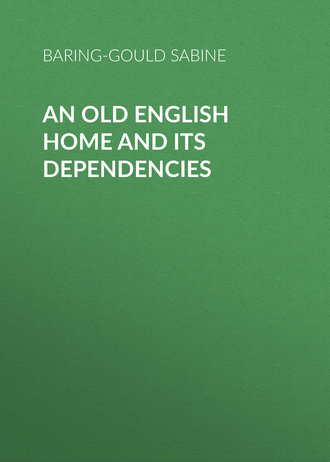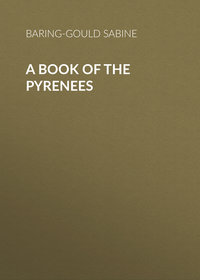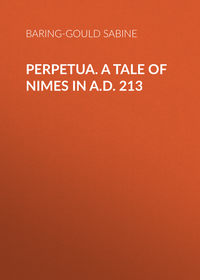 полная версия
полная версияAn Old English Home and Its Dependencies
It is the case with individuals, starting on the battle of life, that they sometimes, by chance, take a wrong direction, and then, once involved therein, have not the power or will or chance to turn back and take another. That is how some men make a botch of their lives, whereas others, perhaps their inferiors in ability, by mere accident strike on a course which leads to power, prosperity, and a name.
It is so among nations, races – and among these the highly-gifted Celt went wrong at the outstart, and that is it which has been his bane through centuries. Now the time for recovery is past. He is forced to take a lower room.
The French, that is to say the Gauls under Frank domination, were forcibly put right. I do not deny that feudalism led to gross abuses, and that it was well to have these swept away, but that which I think was fatal to France at the Revolution was reversion to the Celtic principle of subdivision. This is inevitably and inexorably killing France; it is reducing its population, extinguishing its life.
Between 1831 and 1840 there were in France but three departments in which the mortality exceeded the natality, now there are between forty-five to sixty departments in this condition.
"If we traverse France rapidly in train from the Channel to the Pyrenees, there is one observation that may be made from the carriage windows. Between the Loire and the Garonne, in departments where the soil is poor, there the houses are smiling and well kept – there is evidence of comfort. But, on the contrary, in the departments formerly the richest, there are crumbling walls and empty houses… The rich departments are being depopulated, and in the poor ones there the population remains stationary or only slowly decreases."3
The population in the rich departments is dwindling at the rate of 50 per cent. in half a century.
Why is this? Because all property is subdivided. In the poor districts, too, land will not support all those born, and therefore some take up trades or go as labourers and artisans.
The increase in population in France per thousand in the year is 18, whereas in Prussia it is 13.
I was much amused last summer with the remark of a little fellow of twelve, who was showing me the way across some fields, as a short cut. I remarked on the beauty of the place, and the fertility of the soil. "Yes," said he, "but I think it is time for me to be moving, and look out for some place for myself."
Such a thought, springing up in an English child's mind, would not occur to a French child. But it is just this which has made us successful colonists, and it is the absence of this which makes French colonies dead failures. Whereas we and the Germans pour forth tens of thousands of emigrants, France sends to her North African Settlements just over six hundred persons per annum – and they are nearly all officials.
The maker of pottery, after having tempered his clay, puts into it particles of grit, of sand, and about these the clay crystallizes, and it is the making these centres of crystallization that gives to pottery its cohesion. Without these particles it goes to pieces in burning, it breaks up with the least pressure. And our manor houses are these particles of grit, centres of crystallization to our people, that make us so tough and so cohesive a race – at least, I think it is one very important element in the manufacture.
If we desire to study the organization of a manor as set about by one of the branches of the great Scandinavian-Teutonic stock, we cannot do better than observe the conduct of the settlers in Iceland at the end of the ninth century.
When the Norsemen came to Iceland they brought with them their thralls, and they proceeded to make their claims to land, till they had portioned out all the soil worth having among the great heads of families. The land thus fell into shares, such as we should call manors, and each share was under a chief, who planted on the soil his kinsmen, and any others who applied to him for allotments. No freeman, if he could help it, would accept the land as a gift, for the reception of a gift entailed responsibility to the giver, a sort of dependence that the free spirit of the race greatly disliked.
"The period during which the settlement of Iceland was going on lasted about sixty years. At the end of that time the island was as fully peopled as it has ever been since. During all that period each chief, and his children after him, had lived on his holding, which proved a little kingdom of itself, allotting his land to new comers, whose kinship, turn of mind, or inferiority in rank allowed them to accept the gift, marrying and inter-marrying with the families of neighbouring chiefs, setting up his children in abodes of their own, putting his freed men and thralls out in farms and holdings, fulfilling the duties of the priesthood in his temple, and otherwise exercising what we should call the legitimate influence on those around him, to which he was entitled by his strength of arm, or birth, or wealth."4
This is just what took place in the conquest of Britain by the Saxons, Jutes, and Angles. They portioned out the land among them, and turned the original inhabitants into serfs; to some of these they gave tenements to hold subject to service: these are now represented by our tenant farmers; to others, kinsmen, they gave lands free of charge, but under their own lordship: such are the ancestors of our yeomen.
Now an Icelandic chief was magistrate and priest in one. He was called the Godi – the Good man. Hard by his hall was the sacred circular temple, and he offered sacrifice therein. In his hall were assembled the free householders, to consult relative to the affairs of the district. This was the husting, or house council. We had precisely the same condition of affairs in England. Where a manor is there is the hall, and in that hall were held the courts, which all free holders attended.
Very probably each Anglo-Saxon lord had his temple adjoining his hall, but when England became Christian, several manors, when small, combined to keep a priest between them; but when the church adjoins the manor house, then almost certainly it occupies the site of the old heathen Saxon temple; except in Wessex, which was subjugated by Christianised Saxons.
The hall was the social and political centre of each community. There the lord showed hospitality, administered justice, appointed his thralls their tasks, and received the dues of his tenants.
In the earliest period, in it he and his house-churls and family slept, as well as ate and worked. But the women had a separate apartment, which in time became the with-drawing room. Bedrooms, kitchens, parlours, were aftergrowths, as men sought more comfort or privacy, and these were grouped about the hall. Nevertheless, the custom of sleeping in the hall continued till Tudor times.
It is instructive to notice the difference between the residence of the feudal lord on the Continent and that occupied by him in England. In the former his place of abode is a castle, château, derived from castellum, schloss, from schliesen, a place into which the lord might lock himself in and from whence lock out all enemies. But the English terms – mansion, manor-house, hall, court, imply nothing military, give token of no exclusiveness, make no threat. The chronic warfare and petty disturbances that prevailed on the continent of Europe obliged the lords of the soil to perch their residences on inaccessible and barren rocks, whereas in England they are seated comfortably in valleys, in the midst of the richest land. In France, in Germany, in Italy, each feudal owner quarrelled with his neighbour, and made war on him when he listed. There was nothing of that kind in England. With the exception of the struggle between Stephen and Matilda, and the Wars of the Roses, we were spared serious internecine strife, and the hand of the king was strong enough to put down private feuds.
The castle was an importation into England, brought in by the Norman and Angevin kings, and it was only the foreign favourites to whom the king granted vast numbers of manors who had castles. But the castles never affected English domestic architecture; on the contrary, the English sense of comfort, peace, and goodwill prevailed over the fortress, broke holes in it for immense windows and for wide doorways; and nothing remained of menace and power except the towers and battlements.
On the Continent, however, till the eighteenth century, the type of fortress prevailed; the angle towers became turrets, but were indispensable wherever a gentleman had a château. As to the English noble or squire, his only tower was the dove-cot, and the holes in it not for muskets and crossbows, but for the peaceful pigeon to fly in and out.
The pedigree of a castle is this:
The stronghold in France in Merovingian days consisted of an adaptation of the Roman camp. It was an earthwork with a stockade on top, enclosing a level tract on the top of a hill, if a suitable hill could be found; within was a mound, a motte; on this stood a great round tower of woodwork, in which lived the chief. The earthwork surrounding the camp had mounds at intervals, and in the space within the stockade were similar constructions, a hall and storehouses.
Now the mediæval castle was precisely this, with the one exception – that stone took the place of wood, and the tower on a mound became the keep.
When the Normans came to England they translated to our island the type of castle they had been accustomed to in France. They had to bring their architects, in some cases their material, from France. But, whereas this became the type of the château in France, it had nothing to do with the genesis of the manor-house in old England. Our manor-houses did not pass out of lordly castles, but out of halls. The very situation of our old manorial mansions shows that they were never thought of as fortresses.
The Anglo-Saxon did no building of domestic architecture save with wood. The English lord lived in his great wooden hall, with his tenants and bonders about him. If he squeezed them, it was gently, as a man milks his cow. Of the Norman it was said, Quot domini castellorum, tot tyranni.
In France the fortress of the peasant was the church, and the tower his keep, and in times of trouble he conveyed his goods to the church, and the entire building became to him a city of refuge. That is why wells, bake-houses, and other conveniences are found in connection with many foreign churches.
The battlements of our churches and their towers may perhaps point to these having been regarded in something the same light by the inhabitants of a parish in England, but more probably they came into use when the roofs were not steep, and instead of being slated or shingled, were covered with lead. To a lead roof, a parapet is necessary, or rather advisable; and the parapet not only finishes it off above the wall, but also serves to conceal the ugliness of a low-pitched roof. And the parapet was broken into battlements to enable the gutter to be readily cleaned, by throwing over accumulations of snow and leaves.
The battlement became a mere ornament – almost a joke to English architects; they even battlemented the transoms of windows, and the caps of pillars. It would seem as though, in the sense of security in which the English were, they took a pleasure in laughing at the grave precautions employed on the Continent, where the battlement was something far too serious and important to be treated as an ornament.
The poor old hall has shrunk and been degraded into a mere lobby, in which to hang up great coats and hats and sticks and umbrellas. Originally it was the main feature of the manor-house, to which everything else was subsidiary; then it was ceiled over, a floor put across it, and it became a reception-room, and now a reception-room for overcoats only.
But let it be borne in mind where a real hall is in place and where it is not. It belongs to a manor and to a manor only; it is incongruous in a villa residence, and wholly out of place in a town dwelling. Many a modern gentleman's place in the country is designed to look very pretty and very mediæval or Tudor; but this is all so much ornament stuck on, and the organic structure agreeth not therewith.
The hall, so far from excluding people, was so open-doored as to invite not people only but all the winds of heaven to blow into and through it.
Very usually the front door of the house under the porch opened into it, and immediately opposite was the door out of the hall into the court. Naturally the wind marched through.
As a bit of shelter a screen was run up, but only of timber, and the passage boxed in. Above was the minstrels' gallery; and in the screen were, of course, doors into the hall, and a buttery hatch, as on the further side of the passage was either kitchen or cellar, or both.
To almost every hall was a slit or eye and earlet hole communicating with a lady's chamber. The tyrant Dionysius of Syracuse had a prison which was so constructed that every whisper in it from one prisoner to another was carried through a tube to his private apartment, where he sat and listened to what his captives said.
The slit above mentioned was the Dionysius's ear of that domestic tyrant, the lady of the house. She sat in her room, with her ear to this opening, when her good lord revelled and joked in the hall with his boon companions, and afterwards – behind the curtains – his words were commented on and his jokes submitted to searching criticism. Moreover, through this slit her eye raked the hall when the servants were there, and she could see if they attended to their work or romped with the men, or idled gossiping.
We have so far advanced that the ear is no longer employed – but the domestic tyrant is, I am credibly informed, still with us, advancing triumphant through ages, and like a snowball acquiring force, consistency, and hardness in progress.
CHAPTER III.
The Domestic Hearth
In 1891 I was excavating a village at the edge of Trewortha Marsh, on the Bodmin Moors, in Cornwall. There were a number of oblong huts, but one seemed to have been occupied by more than one family, as it was divided into stalls, by great slabs of granite set up on edge, and in front of each stall was a hearth on the soil, and the soil burnt brick-red from heat.
The pottery found strewn about was all wheel-turned, but early and rude, and no trace of glass could be found. These habitations belonged to a period after the Roman invasion, and probably to Britons.
The hearth is the centre of family life, what the hall is to the manor. About it gather all who are bound together by community of blood and interest, and this is still recognized, for it is counted an unwarrantable presumption in a stranger to poke your fire.
But how small and degenerate is our fire from what it once was. Coal having taken the place of logs, the hearth has been reduced and the grate has supplanted the dogs or andirons, and the gaping fireplace is closed in.
I know an old Elizabethan mansion where the chimney-stack containing three flues descends into the hall and has in it three fireplaces, so that simultaneously three fires could burn in the same room, and the family circle could fold about the three hearths combined into one in an almost complete circle.
And what chimneys those were in old times! Bacon-sides were hung in them, so large were they, and not infrequently a ladder could be put up them to communicate with a little door that gave access to a secret place.
I was looking not long ago at the demolition of a good yeoman's dwelling in Cornwall. By the side of the hearth, opening into the kitchen-hall, was a walled-up door, against which usually a dresser or cupboard stood. This walled-up door communicated with a goodly chamber or cellar formed in the thickness of the chimney, and without an opening to the light outside. Access to this chamber could, however, always be had by means of a hand-ladder placed when required in the chimney. This admitted through a door in the chimney to the receptacle for kegs – for that was the real purpose of the concealed place, it was the yeoman's cellar of spirits that had never paid customs. When a fresh supply was taken in, the door into the kitchen was unwalled and the cellar filled with kegs, then walled up again and plastered over. But as spirits were wanted they were got by means of the ladder – keg by keg.
It was in such a chamber in the wall, to which access was alone obtainable through the chimney, that Garnet and Oldcorne were concealed after the Gunpowder Plot. This is how Ainsworth describes the place of retreat: "Mrs. Abindon conducted the two priests to one of the large fireplaces. A raised stone about two feet high occupied the inside of the chimney, and upon it stood an immense pair of iron dogs. Obeying Mrs. Abindon's directions, Garnet got upon the stone, and setting his foot on the large iron knob on the left, found a few projections in the masonry on the side, up which he mounted, and opening a small door made of planks of wood, covered with bricks and coloured black, so as not to be distinguishable from the walls of the chimney, crept into a recess contrived in the thickness of the wall. This cell was about two feet wide and four high, and was connected with another chimney at the back by means of three or four small holes. Across its sides ran a narrow stone shelf, just wide enough to afford an uncomfortable seat."
But these wide chimneys, if they allowed ascent, also permitted descent, and many a house was entered and burgled by this means.
There was in my own neighbourhood, about a century ago, a man who lived in a cave above the Tamar, in Dunterton Wood, whose retreat was known to none, and who was a terror to the neighbourhood. He was wont during the night to visit well-to-do persons' houses within reach, get over the roof to the chimney of the hall, and descend it. Once in the house he collected what he listed, unbarred the door, and walked away with his spoil.
So great was the terror inspired by this man in the neighbourhood that all householders who had anything to lose had spiked contrivances of iron put into their chimneys, so that the burglar in descending at a rapid pace stood a chance of being impaled. The other day, in repairing my hall chimney, I came on this contrivance.
The end of the man was this. Colonel Kelly, of Kelly, was out one day with his pack of foxhounds, when they made a set at the cave, and so it was discovered with the man in it and a great accumulation of plunder. I believe he was hung.
The same cave was employed as a place of refuge for an escaped convict some fifty years ago. After that, the late Mr. Kelly blew up the cave with gunpowder, and its place is now occupied by the ruins of the rock above. It can conceal no more lawbreakers.
There was something very pleasant in the old evening round the great fire. If one of wood, then, in a farmhouse, the grandfather in the ingle-corner was an indispensable feature. A wood fire requires constant attention, and it was his place to put the logs together as they burnt through; and he knew he was useful, and when the farmer's wife or his granddaughter came to the hearth for a bit of cooking she had always a pleasant word for the old man.
The settle was another feature.
There is a species much used formerly in Somersetshire and Devon, and perhaps elsewhere. It was a multum-in-parvo. The back opened and disclosed a place in which sides of bacon were hung. Above was a long narrow cupboard for the groceries. The seat lifted – for what think you? As a place where the baby could be placed in greatest security whilst the mother was engaged at the fire. I believe that dealers now call them monks' seats. Monks' seats! they belonged to women and babies. But a dealer knows how to humbug his customers.
I was once in a certain county, I will not say which, and visited a gentleman who had bought and built a fine house, very modern, but very handsome. Then the fancy took him to be possessed of old oak, so he went to a dealer.
"My dear sir," said Lazarus, "I have the very thing for you – a superb antique oak mantelpiece and sideboard – the finest in England of the date of Henry VIII. But they are all in an ancient mansion, a black-timbered hall in Cheshire or Shropshire – I forget which. Would you care to go down and see it? The house is to be pulled down, and I must remove the contents."
Of course Mr. Greenhorn went, bought all at a fabulous price, and brought them to his mansion. Well, anyone with the smallest knowledge of old oak would see at a glance that this was all Belgian stuff, made up of bits from old churches, put together higgledy-piggledy without any unity of design – stuff that no ancient would have designed, for there was no design in it. And the dealer kept this Cheshire or Shropshire black-timbered house regularly supplied with this detestable rubbish, and regularly took greenhorns to it to pay down heavy gold for what was worth nothing but a few Belgian francs.
At the risk of branching away from my topic, I must have another word relative to dealers.
There is still in England a good deal of good plain old oak; old cradles, old standing clock cases, old bureaus, etc., without any carving on them, but fine in their lines and in their simplicity. These wretches buy them up and give them into the hands of mechanical carvers to adorn in "Elizabethan style," and then they sell these good old articles of furniture – defaced and spoiled and rendered all but worthless.
"Good heavens!" said I to one of these gentry; "you have utterly, irrevocably ruined that noble wardrobe."
"Well, sir, I couldn't sell it for one-tenth of the price hadn't I done this. The buyers like this, and I have to suit their taste."
To return to the hearth and to the settle.
A friend one day saw a screen of carved oak in a cottage. He bought it for half a guinea, and then called me into consultation on it. With a little study it revealed itself to be the back of a settle of Henry VII.'s reign. The mortices for the arms and for the seat were there; also nail marks showing that stamped leather had been fastened to the back below the sculpture. There were pegs showing where had been the pilasters sustaining the canopy, and one scrap of canopy still extant. I show the restoration (p. 57).
Fine though this be, I know something better still – not in art, but for cosiness, and that is the curved settle, it is constructed in an arc. In a farmhouse I know well are two such settles, and they are connected by a curved iron rod fastened to the ceiling, and there are green baize curtains depending from this rod.
On a winter evening, the farmer and his wife and the serving maidens and young men come into the kitchen, and the circle is completed with chairs or stools, the curtains are drawn, the fire is made up, and a very jolly evening is spent with cakes and cider, and tales and jokes and song.
I was at a sale one day – a very small farm but an old one. A farmer bid for the settle – a small one. One of his daughters was there. She turned to her sister and said: "I say, Nan, vaither he've gone and bought the settle, and it's lovely; it will hold only two."
"Well, Jane," said her sister, "I reckon – that depends. You must have the right one beside y'; then it's just large enough, and you don't want no more."
When I was a child, some sixty years ago, the mat before the fire was the line of demarcation, beyond which a youngster might not go.
"My dear," said my grandmother, "fires are made to be seen – not felt."
Oh, how we shivered beyond the mat! I used to look at a patent bacon-toaster, and resolve, when I was a man and independent, to have a curved settle formed of burnished tin, and to sit before a roaring fire in the focus of all the converging rays, and never stir therefrom from Michaelmas till Lady Day. But the curved settle answers the purpose.
Among the troubles and irritations of life, one of the worst is a smoky chimney, and among all the hideousness of modern contrivances nothing surpasses the cowl.
It is very curious that architects should set themselves to work to violate first principles, and so involve us in these troubles. In the first place, to ensure that a chimney shall not smoke, the flue must be made large enough to carry the smoke. This is a principle very generally neglected. Next it is necessary that the chimney should not have a flat top, for then the wind beats against the broad surface, and, of course, prevents the smoke from rising, and much of it is deflected down the flue.









